YOUR CART
- No products in the cart.
Subtotal:
$0.00
BEST SELLING PRODUCTS
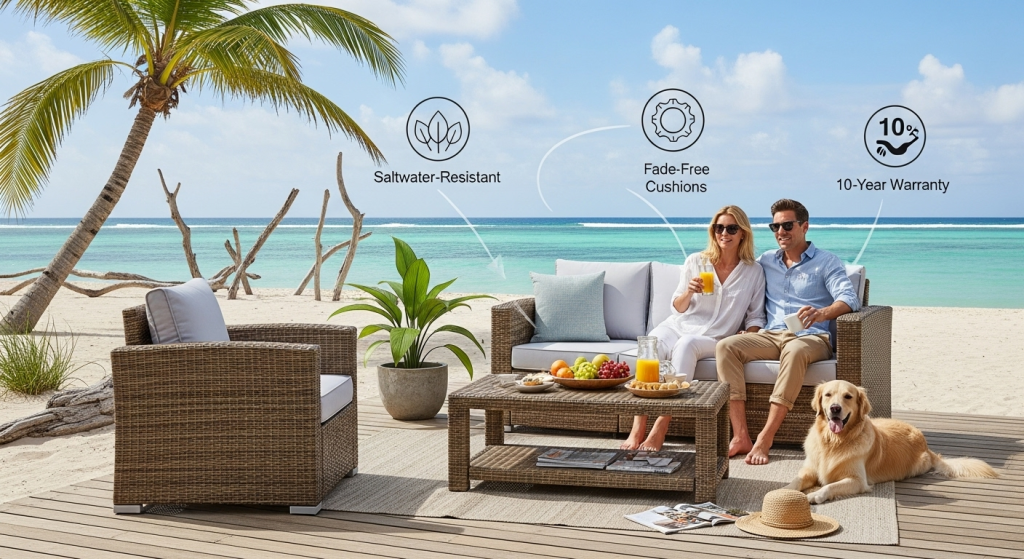
If you’re planning to upgrade your backyard, balcony, poolside setup, or commercial setup in a more affordable way, wicker outdoor lounges in Australia are one of the most versatile and stylish choices you can make. But not all wicker lounges are made equal. The wrong type might fade under the sun, get damaged in a storm, or simply not fit your space.
You should consider some crucial things before buying wicker outdoor lounges, including:
This guide walks you through exactly what you need to know — the types, materials, components, and smart tips to make the right decision the first time.
When you hear the term wicker lounge, you might think of beach houses, tropical resorts, or breezy patios — and there’s a good reason for that.
But to understand it properly, let’s clear up a common confusion: “wicker” isn’t a material — it’s a weaving method.
Wicker is the technique of weaving flexible materials into furniture and baskets. It has been around for thousands of years, used in everything from ancient Sumerian furnishings to 19th-century Victorian wicker furniture, dating back at least 4000 BC.
The name refers to the pattern — the crisscrossed, hand-woven look — rather than the substance it’s made from.
A wicker outdoor lounge is any outdoor seating furniture made using this technique, typically shaped into sofas, daybeds, chairs, and other pieces of furniture.
It creates a textured, airy look that’s not just decorative but also functional, allowing airflow, keeping the seat cool, and offering a light but sturdy structure.
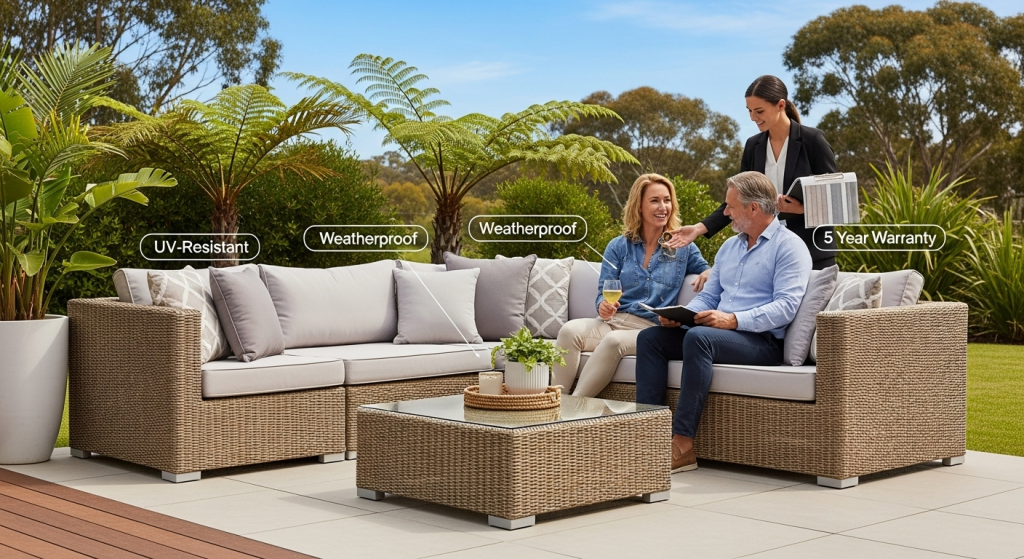
There are two main types of materials used for wicker weaving in outdoor lounges:
Moisture can cause it to rot, and sunlight can make it crack or fade. Even with a cover, natural wicker can become brittle over time.
It’s designed to resist UV rays, rain, humidity, and temperature shifts — all of which are common in Australian outdoor settings.
Aside from this, many other synthetic materials, such as polypropylene (PP) or high-density polyethylene (HDPE), are also used as synthetic wicker.
In Australia, the sun is harsher than in many other countries, and outdoor furniture has to endure–
This is where PE wicker shines.
Though PE has a lower light reflection rate than aluminium and other metals (20%, which can reach up to 70% to 100% in special cases), it still can withstand the outdoor environment better than natural rattan.
Unlike natural wicker, PE wicker doesn’t fade, crack, or absorb moisture. It’s also flexible enough to weave tightly while being strong enough to hold weight without snapping.
Many wicker outdoor lounges in Australia now feature PE wicker specifically for these durability reasons.
Let’s say you have a poolside lounge in Brisbane or Sydney. If it’s made of natural rattan, even the humidity alone could shorten its lifespan within a season.
But if it’s made from UV-resistant, weatherproof PE wicker, you won’t have to worry about mould, sun damage, or cracking. You can just give it a wipe and enjoy the weekend.
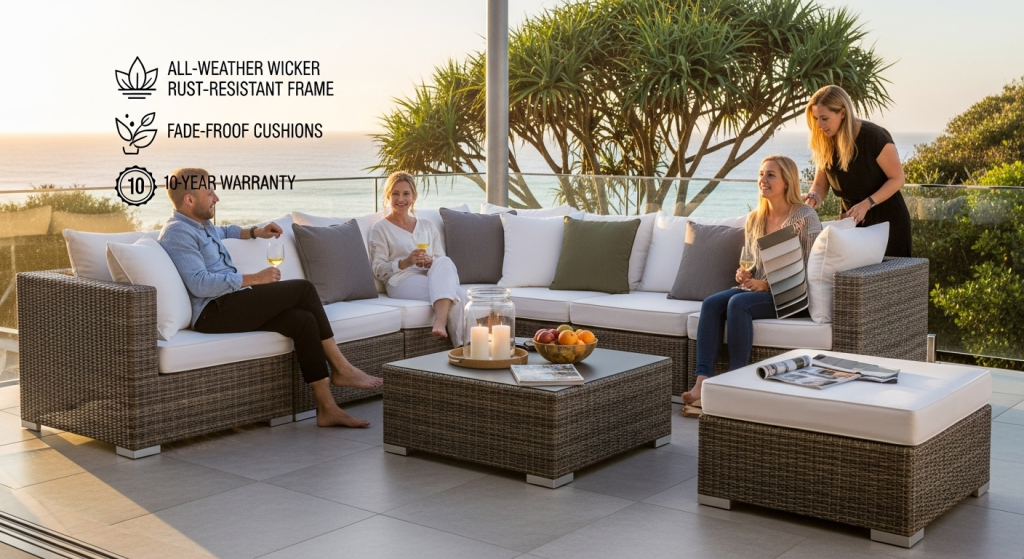
The popularity of wicker outdoor lounges has exploded in recent years, especially in garden spaces, coastal or Hamptons-style outdoor setups.
Here are the reasons behind.
You can separate wicker lounges into different types by different categories. Here are the coon types of wicker lounges.
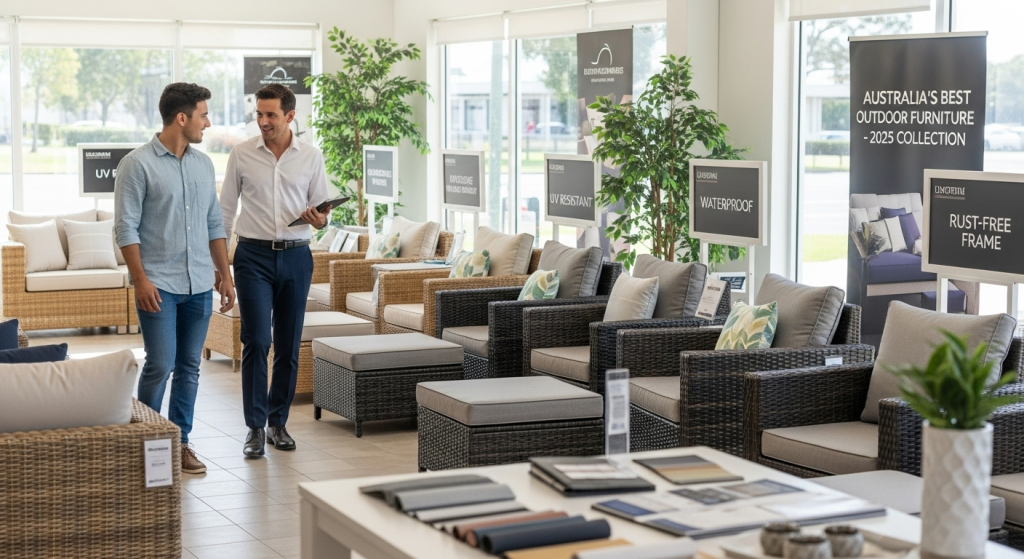
Wicker Outdoor Lounges in Australia have different parts and components. Here is a quick overview of them.
Wicker weaving is the main component of wicker outdoor lounges since the name comes from the technique. PE rattan or synthetic rattan is the primary source of material used for weaving in outdoor wicker lounges.
Look underneath the wicker. While the exterior of wicker lounges is synthetic rattan, many of them have a powder-coated aluminium frame or a powder-coated stainless steel frame for extensive support.
Aluminium is rust-resistant and lightweight. Coating on steel also makes it rust-resistant, and it is durable.
Wicker outdoor lounges in Australia have–
Non-slip, adjustable feet keep your lounge stable on uneven surfaces like timber decking or pavers.
These hold your modular wicker lounges together so they don’t shift when people sit or move around.
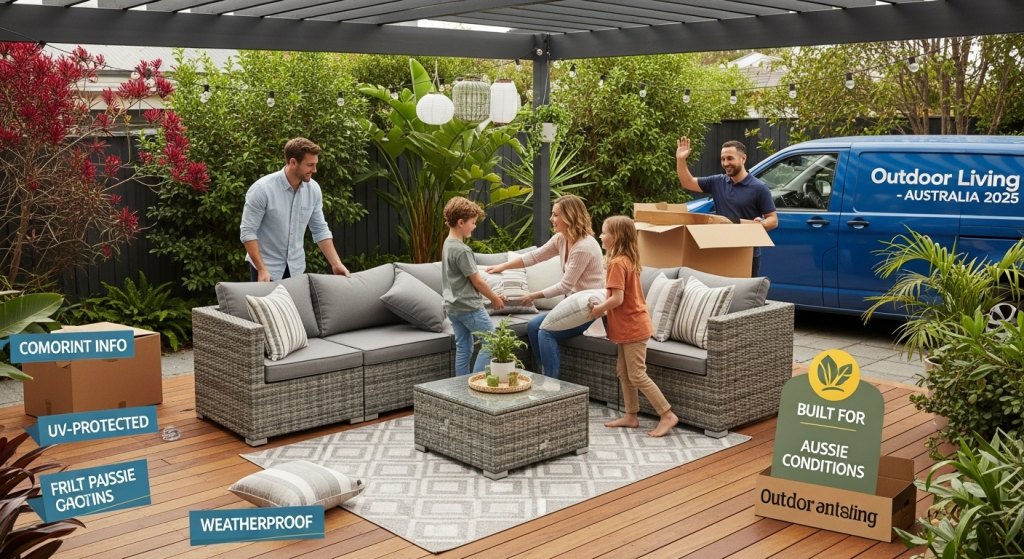
As you need to utilise your outdoor spaces to their maximum capacity, choosing the right wicker outdoor lounges in Australia is crucial. Whether it’s for relaxing at home or serving guests in a busy venue, the lounge you pick must suit your space, weather, and usage needs.
Here, we’ve covered the key points to think about before making a purchase.
You should have that question very first in your mind. Commercial wicker lounges and lounges for home serve different purposes.
If you’re buying for your home — like a balcony, garden, or poolside — comfort and style usually come first. You might only use the furniture on weekends or when guests visit.
So, soft cushions, flexible layouts, and a design that matches your house are important.
For example, a modular wicker lounge works great for families because it can be rearranged for movie nights, parties, or solo relaxing.
In restaurants, resorts, cafes, hotels, pool clubs, and event venues, lounges are used daily and by many people. That means the very first priority should be durability, which will ensure they last through all kinds of weather and traffic.
They also must be easy to clean, still, don’t skip the comfort.
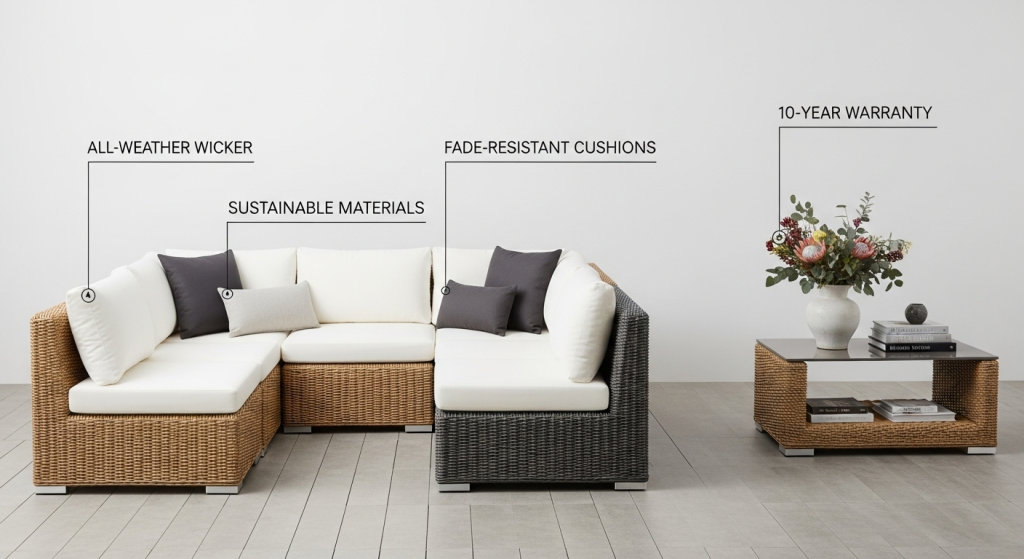
Before buying, measure your balcony, patio, or garden properly.
Your furniture should suit your existing outdoor setup.
Australia’s weather is no joke. Here’s what you should check:
You don’t want to replace your lounge after one summer just because the frame rusted or the cushions mildewed.
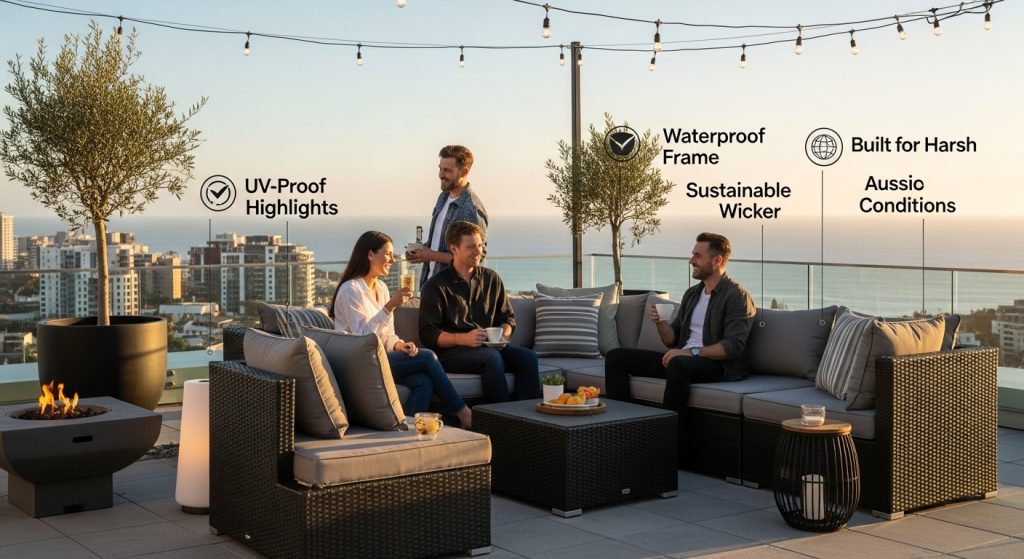
If you need flexibility to move or rearrange the wicker lounges, modular wicker lounges give you freedom. You can reconfigure them based on the number of guests or the space.
However, if you require a neater environment with no hassle of moving, fixed sets may look reliable but offer less flexibility.
It looks good, but can you sit for hours without discomfort? Look for:
You don’t want a beautiful lounge that causes back pain or soggy cushions after a drizzle.

A quality lounge should be easy to clean. The loungers should be like that– Wipe the wicker with a damp cloth. Remove cushion covers and toss them in the wash.
Avoid materials with synthetic rattan that require constant oiling or sealing, such as timber.
Go for lightweight and durable materials. Aluminium frames underneath the wicker materials are easy to move when cleaning, rearranging, or covering during storms.
Always check:
Some lounges require partial assembly, so ensure the tools and instructions are included.
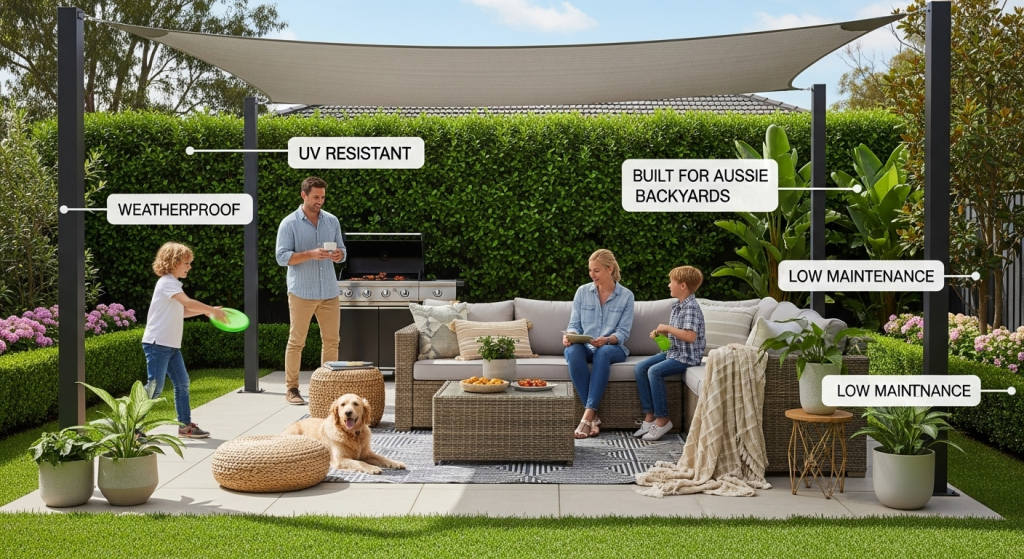
Yes, but be careful with colour, weave style, and height. Mixing pieces works best with modular wicker lounges. Just make sure the frames align and the cushions match in size and height for comfort.
Not necessarily. Only lounges made with UV-stabilised PE wicker and rust-resistant frames are truly weatherproof.
Yes — if it’s built with weatherproof materials. However, using covers or storing cushions indoors extends their life.
Use a soft brush and mild soapy water. Avoid harsh chemicals. Removable cushion covers can be machine washed (check tags).
Not recommended. Indoor wicker (often made from cane or untreated rattan) can easily get damaged by the sun or moisture. Even short outdoor use in harsh Aussie weather can cause cracking or mould.
If you’re planning to upgrade your outdoor space with wicker outdoor lounges in Australia, choose smartly. Durable materials, comfort, and weather resistance should be your priority.
For high-quality wicker lounges designed for the Australian climate, suitable for both commercial and residential use, choose Outdoor Furniture Co. Australia. Our wicker outdoor lounges offer PE wicker, powder-coated aluminium frames, and low-maintenance designs — made to last, made to relax.